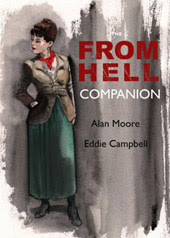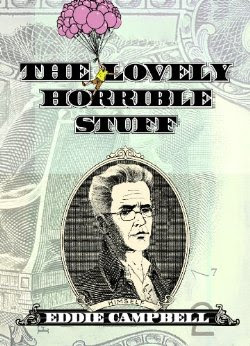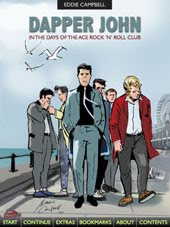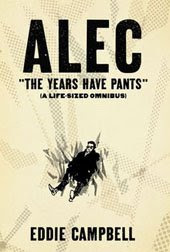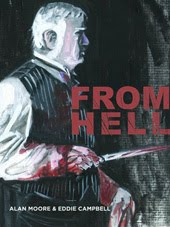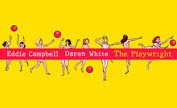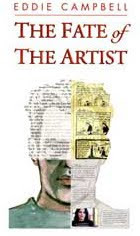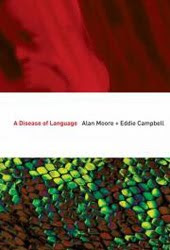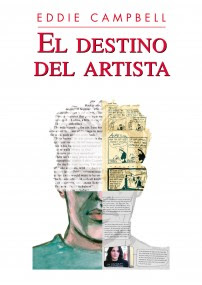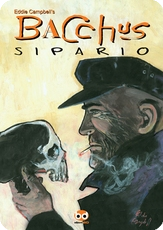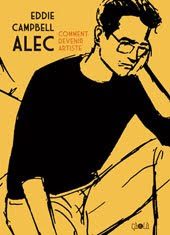Something to Say.
 I'm quite serious about the idea of rules. They have their uses. Here's one: never jump out of a plane without a parachute. The thing about rules is that they can become shortcuts to getting things done efficiently. If the parachute was invented once, we can use it over and over until we think of a better idea, like when we invent anti-gravity powders. I always liked to invent rules. Even at the beginning, because there's nobody likes teaching other people more than those who have just learned themselves. So I was something of a sloganeer right at the start. In June '83 in one of my multifarious hand lettered essays that appeared in various small press newsletters (blogging hadn't been thought of yet) I declared that 'It's not enough to just want to draw comics, you must have something to say'. the following month the Man at the Crossroads wrote in an Escape editorial, 'Cartoonists don't start by being able to draw, they start by having something to say.' Rephrased like that it suited Paul's post-punk philosophy of putting the art in the hands of the energetic novice. A month later again, the phrase turned up in a cartoon Hunt Emerson drew for the Radio Times (the BBC's official 'what's on' guide and one of the country's top selling weeklies. Well it was back then; I considered it high irony that the best selling magazines in Britain were the two television guides). Called upon to draw a cartoon announcing the show That's Life which this week boasted a talking dog among its assorted novelties, Hunt had a poodle being interviewed and saying: 'Most of us can talk, we just don't have anything to say.' (Scanned and shown above right, copyright Hunt Emerson) Hunt said he never read my piece or took much notice of Paul's either, so it's just a coincidence. But I've never been one to let the facts spoil an anecdote.
I'm quite serious about the idea of rules. They have their uses. Here's one: never jump out of a plane without a parachute. The thing about rules is that they can become shortcuts to getting things done efficiently. If the parachute was invented once, we can use it over and over until we think of a better idea, like when we invent anti-gravity powders. I always liked to invent rules. Even at the beginning, because there's nobody likes teaching other people more than those who have just learned themselves. So I was something of a sloganeer right at the start. In June '83 in one of my multifarious hand lettered essays that appeared in various small press newsletters (blogging hadn't been thought of yet) I declared that 'It's not enough to just want to draw comics, you must have something to say'. the following month the Man at the Crossroads wrote in an Escape editorial, 'Cartoonists don't start by being able to draw, they start by having something to say.' Rephrased like that it suited Paul's post-punk philosophy of putting the art in the hands of the energetic novice. A month later again, the phrase turned up in a cartoon Hunt Emerson drew for the Radio Times (the BBC's official 'what's on' guide and one of the country's top selling weeklies. Well it was back then; I considered it high irony that the best selling magazines in Britain were the two television guides). Called upon to draw a cartoon announcing the show That's Life which this week boasted a talking dog among its assorted novelties, Hunt had a poodle being interviewed and saying: 'Most of us can talk, we just don't have anything to say.' (Scanned and shown above right, copyright Hunt Emerson) Hunt said he never read my piece or took much notice of Paul's either, so it's just a coincidence. But I've never been one to let the facts spoil an anecdote. ***********
Here we go again: Dirk at Journalista wrote: "Your lazy funnybook plagiarist for the week: Mike Choi, the artist behind this Witchblade: First Born cover, who shamelessly ripped off Annie Leibovitz’ cover to the August, 1991 issue of Vanity Fair magazine." I beg to differ. That's a good piece. If your purpose is to quote a the original but introduce an adjustment (like the assorted variations on American Gothic)), then you should quote it exactly, and this original was famous enough that it "spawned parodies and imitators.". Choi's quotation gets the Campbell thumbs up, and I refer Dirk to my own long quotation from RG Collingwood.
*********
We should all be following the Gordon Lee case. (via Neil Gaiman). Of tangential interest is another piece by the artist Nick Bertozzi, the extract from whose upcoming book The Salon started the row. he mentions it briefly in this interview, but not by name: "James Sturm and I were working on a proposal for a Hollywood producer; we did a 10-pager together, and it just wasn't going to work out schedule-wise for us to do the book, but we really had a good time working together..." He is in fact referring to an early attempt at making a graphic novel of the Black Diamond Detective Agency for 'Hollywood producer' Bill Horberg. Sturm and Bertozzi took an entirely different approach from the one I went with. I guess they produced the ten pages as a sample to use to sell he project with the intention of finishing it when a deal was made. By that time both had taken on other obligations, Sturm with his newly set up Center for Cartoon Studies, and Bertozzi with The Salon. It would interesting to talk to them about their version of Diamond and show a panel or two (since I guess it will only be seen in the context of interviews and such, as one of the interesting unfinished projects of our times). But I'm saving that for later after the book has found its place in the world and we have time for alternate world contemplations.
Labels: black diamond, my rules, plagiarism













